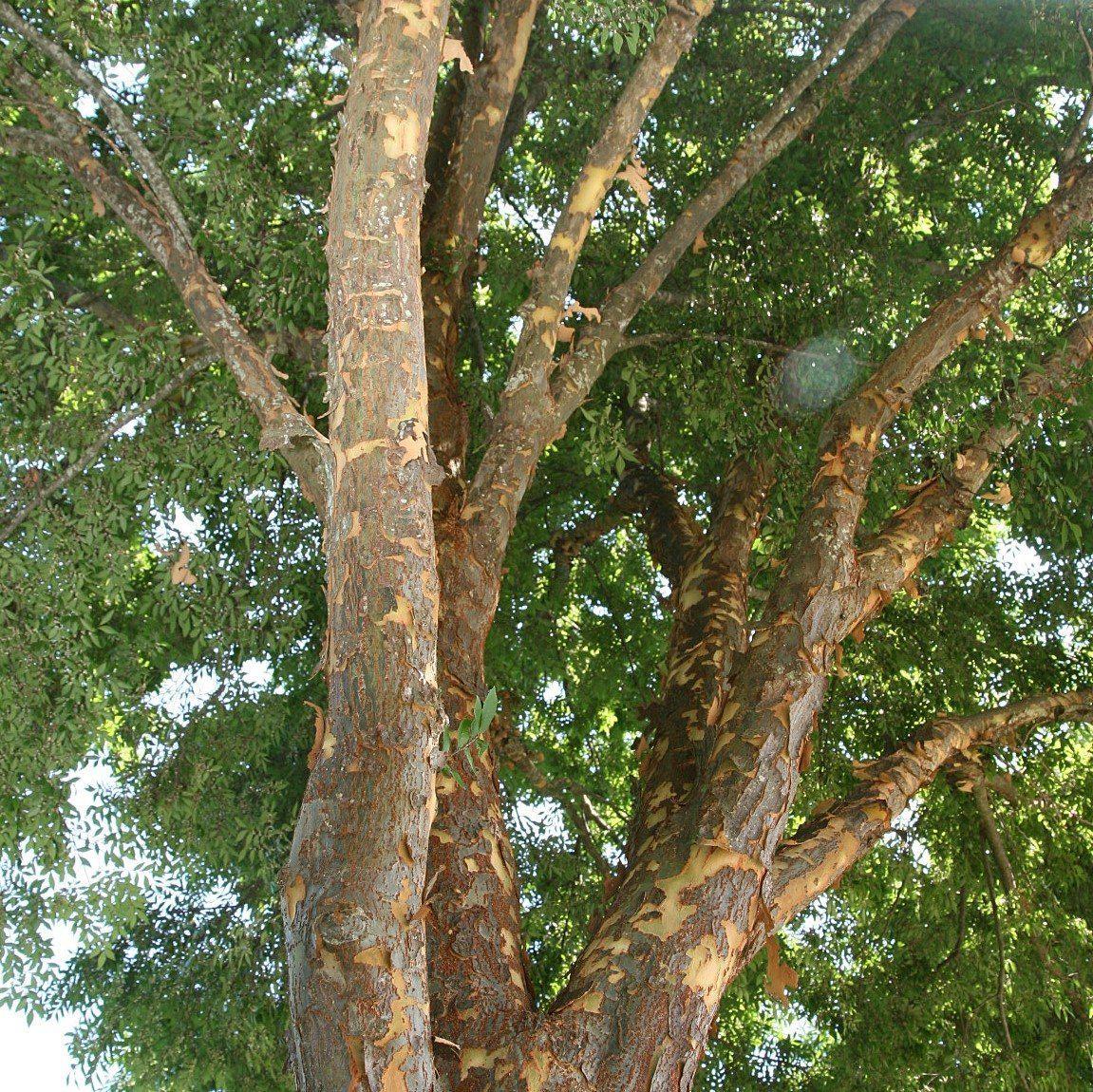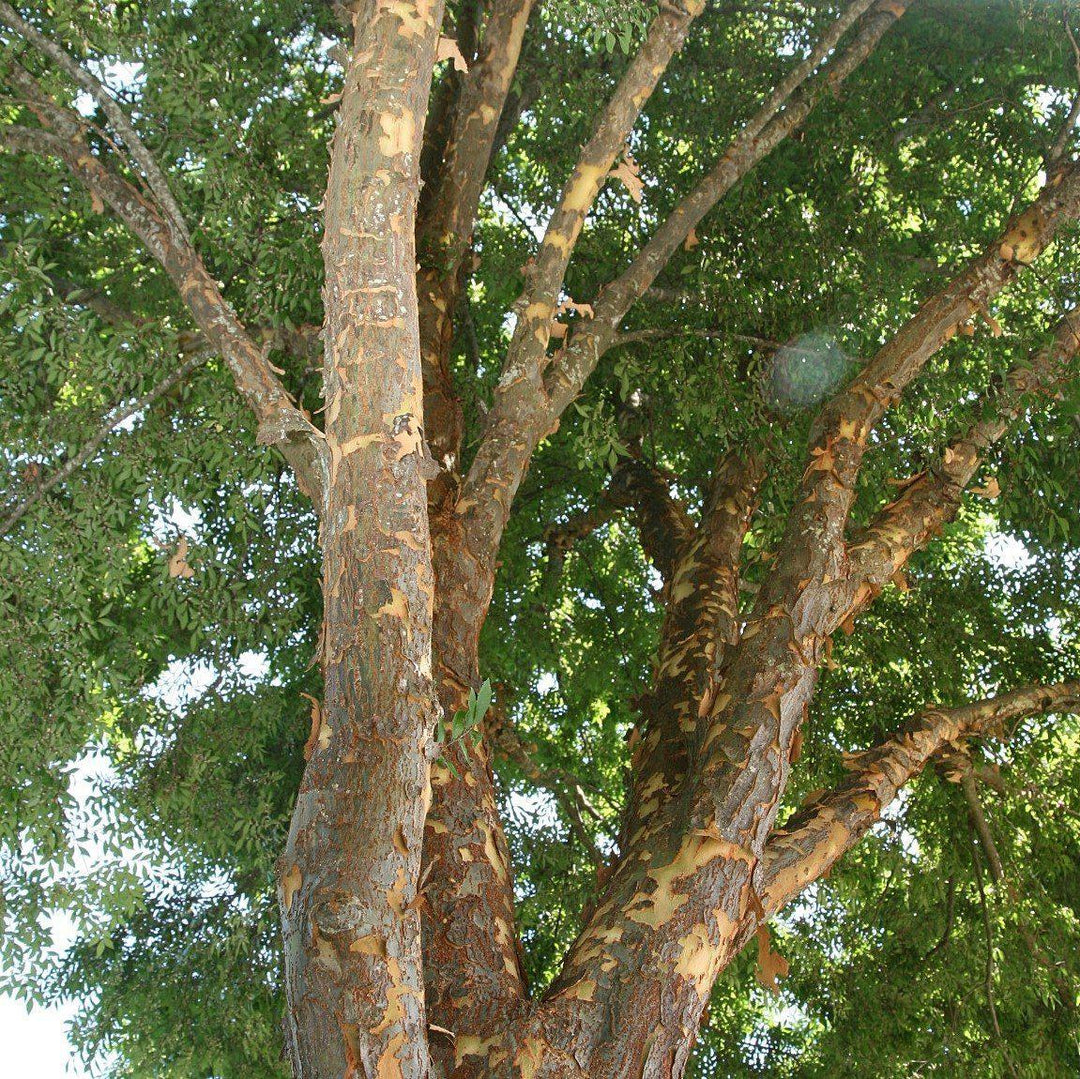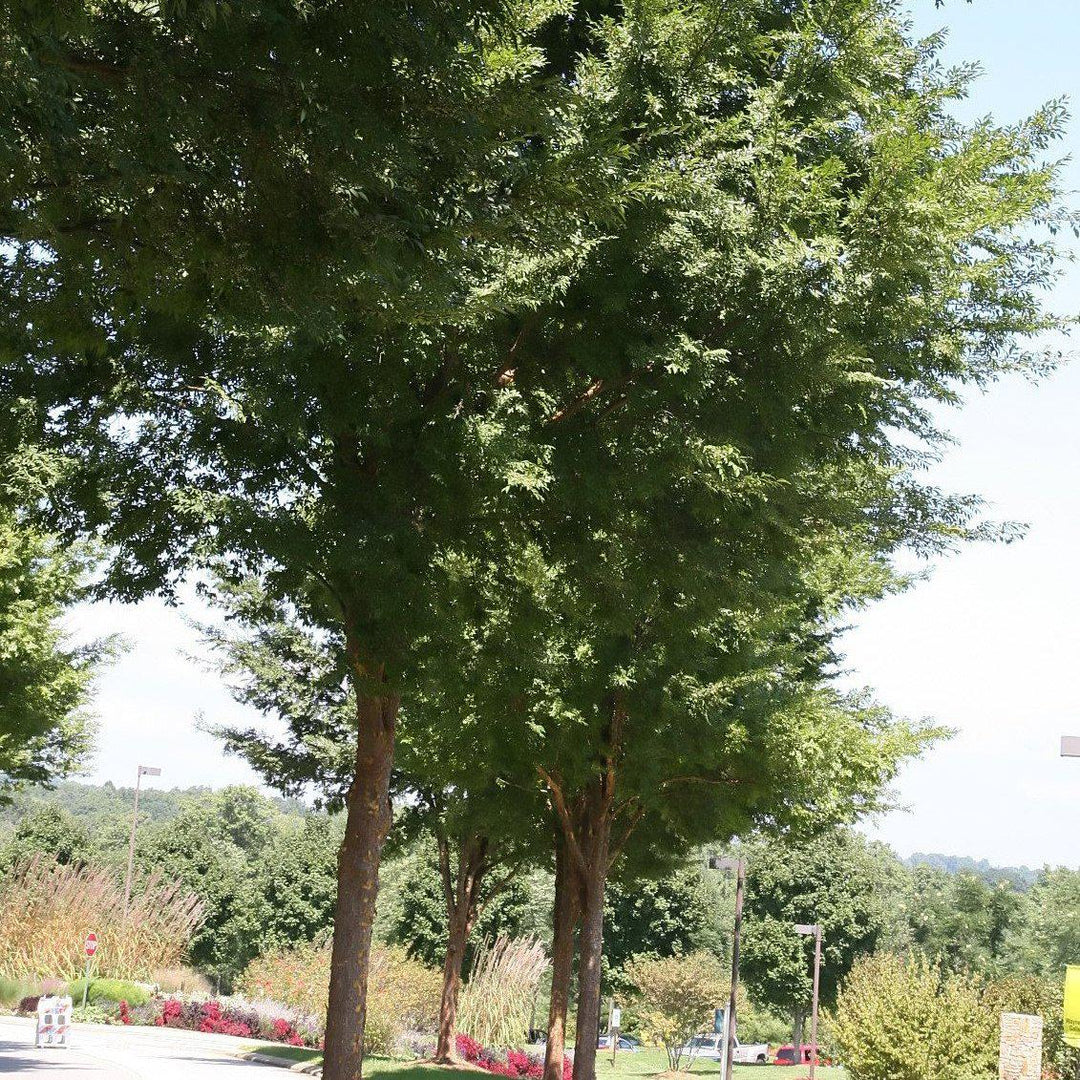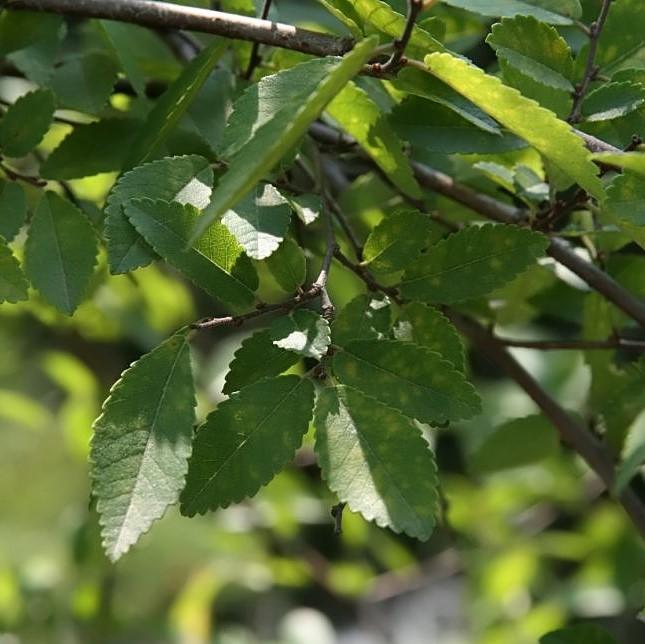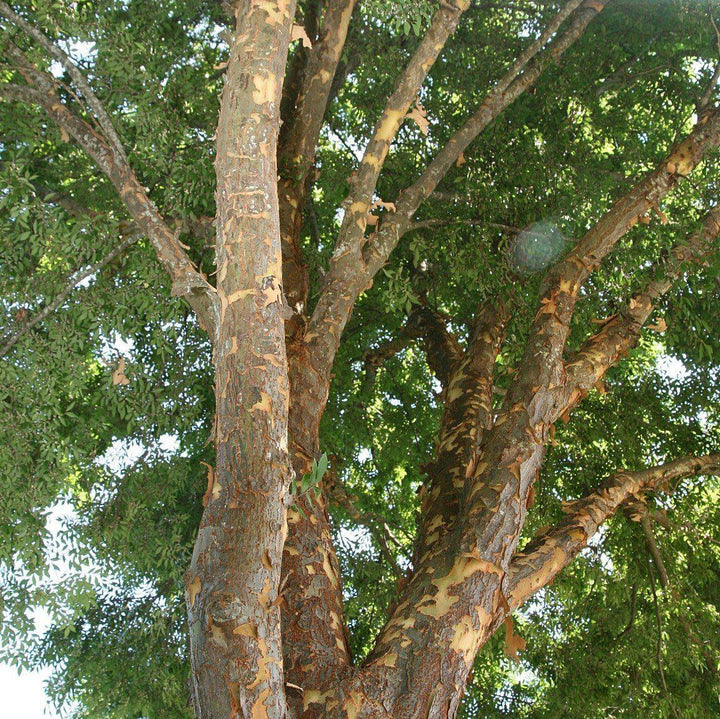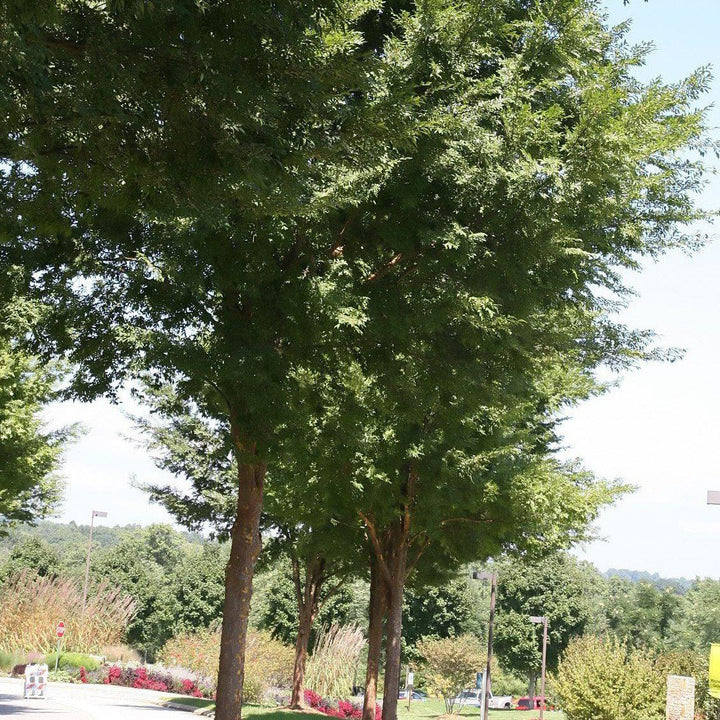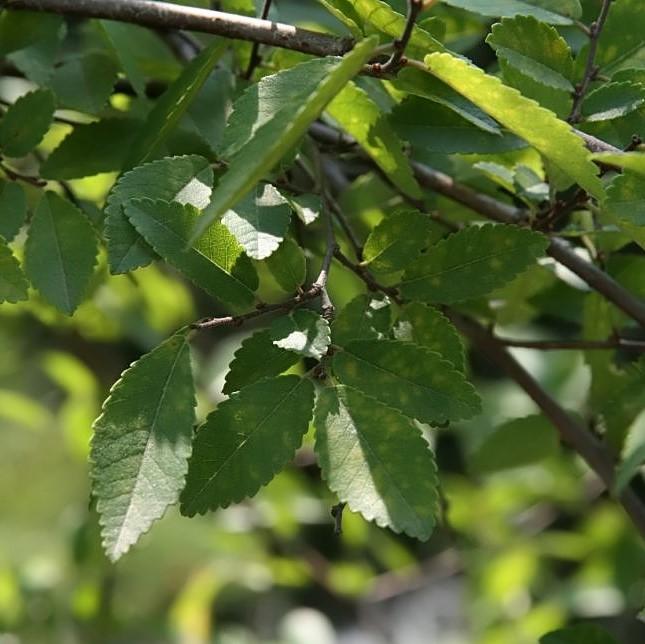Allee Lacebark Elm is a tall vase-shaped deciduous tree with pendulous branches and a fluted exfoliating trunk. The narrow shiny dark green leaves have small teeth that can turn an undistinguished yellow in fall, or occasionally more interesting shades of yellow or reddish-purple. Insignificant small reddish-green flowers bloom in fall and give way to papery wing-like seed pods that mature mid-fall. Grows best with full sun and rich well-drained soils. Allee has excellent resistance to Dutch Elm disease, elm leaf beetle, and leaf scorch. Can tolerate both dry and wet sites.
|
Type: |
|
|
Origins: |
China |
|
Height: |
60’ - 70’ |
|
Spread: |
35’ - 55’ |
|
Spacing: |
45’ |
|
USDA Hardiness Zone: |
4 - 9 |
|
Culture: |
|
|
Bloom Color: |
Green |
|
Season of Interest: |
MAINTENANCE NEEDS: Low Maintenance. Elms are susceptible to phloem necrosis and wetwood. Other potential issues include wilts, rots, canker, leaf spots as well as pests such as miners, borers, and scale.
LANDSCAPE USES: Accents or Group Plantings, Borders, Woodland Gardens, Rock Gardens, Ponds and Streams, and Shade Tree.
COMPANION PLANTS: Crape Myrtle, Fountain Grass, Maple
IMAGES: Photo by David J. Stang, Ulmus parvifolia Allee 2zz, CC BY-SA 4.0. (2) David J. Stang, Ulmus parvifolia Allee 3zz, CC BY-SA 4.0, (3) David J. Stang, Ulmus parvifolia Emer II 5zz, CC BY-SA 4.0


